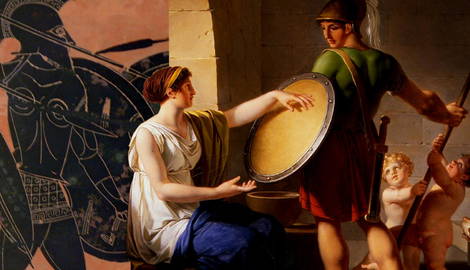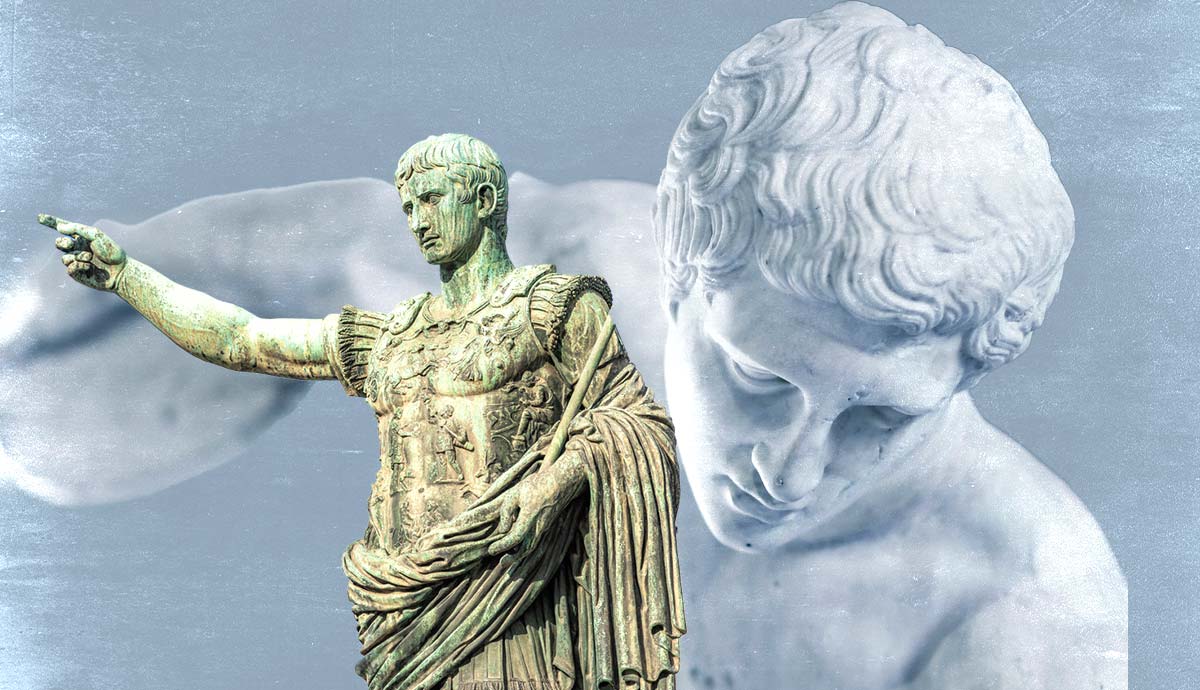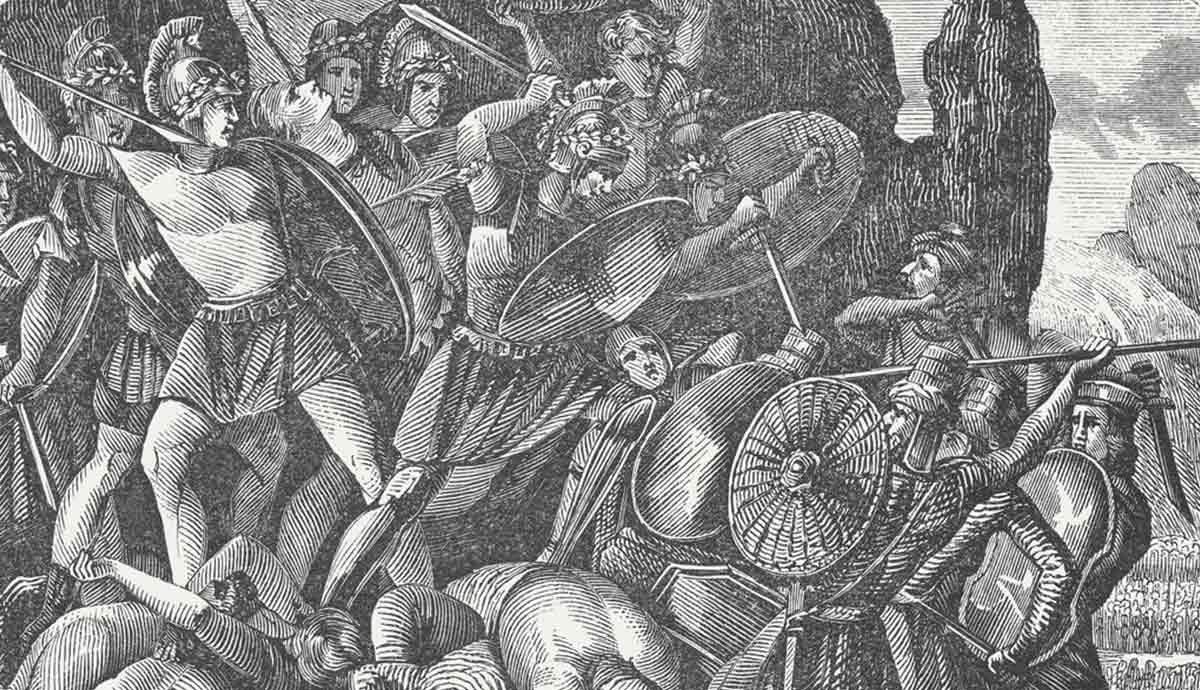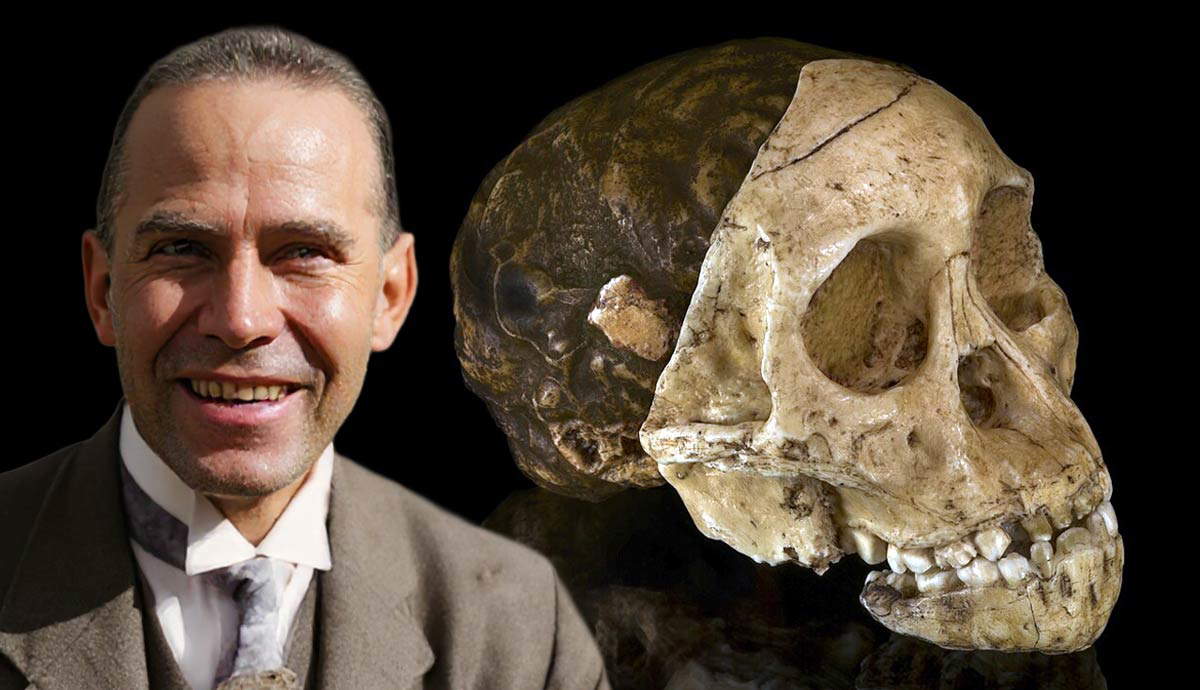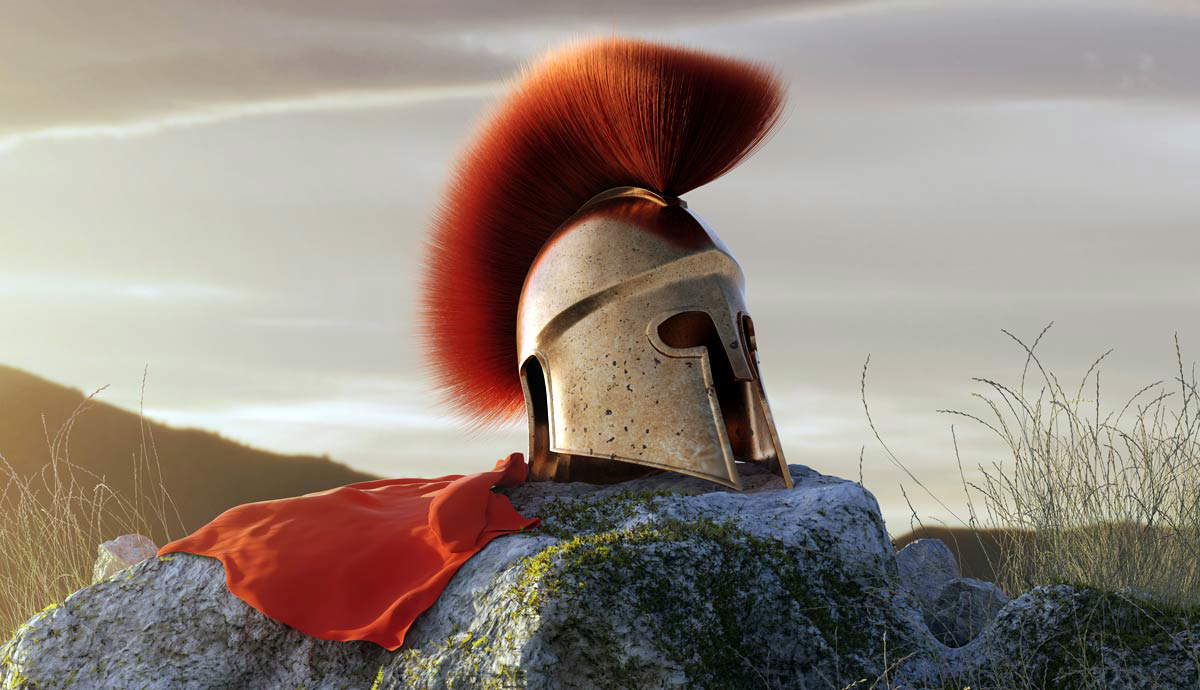
With its oligarchic government, composed of the ephors, the Gerousia, and the two kings, Sparta’s government was an outlier in ancient Greece. Thanks to Sparta’s agōgē, a unique system of civil-military education, the word Spartan has become a byword for military discipline and austere living. This was Sparta, at least as we think of it; but politics in the Laconian city-state were not fixed. Like its neighbors, Sparta experienced periods of reform and conservatism that sometimes threatened to shake its foundations apart.
Lycurgus the Lawgiver of Sparta

The popular vision of Sparta we hold today is due to the reforms of Lycurgus, a semi-mythical lawgiver of uncertain historicity who is said to have introduced Sparta’s peculiar constitution and military education. The date at which he introduced the Great Rhetra (“Great Proclamation”) is unclear, although by the reckoning of Herodotus, it was sometime before the reigns of King Leon and Agasicles, who ruled in the 6th century BCE, although many modern historians tends to date Lycurgus’ reforms at some point in the 7th century BCE.
Plutarch tells us in The Parallel Lives that Xenophon, Aristotle, Timaeus, Simonides, and others could not agree when it was that Lycurgus lived, so the ancient Greeks could not be sure when Sparta’s unique constitution was introduced, much less ourselves.
According to Plutarch, Lycurgus traveled extensively before returning to Sparta to introduce his radical reforms. First he went to Crete, where he admired their “simple and severe” civilization, and from there he traveled to Asia Minor where he also found elements of the “extravagant and luxurious” Ionian way of life to be worthy. In Egypt, Lycurgus “ardently admired their separation of the military from the other classes of society that he transferred it to Sparta, and by removing mechanics and artisans from participation in the government, made his civil polity really refined and pure.”
The Reforms of Lycurgus: Government

We can infer from Plutarch’s account that, whether Lycurgus was a historical figure or not, the Spartans believed their system to be a combination of the best elements from a variety of civilizations. The result was an essentially oligarchic government with democratic and monarchical elements.
Sparta had two kings, belonging to the Eurypontid and Agiad dynasties. Their responsibilities were generally confined to military, religious, and judicial matters. Each king served as a check on the other’s power and according to modern historians like Paul Cloche, “the Spartan kings exercised powers extremely reduced and inferior to those of the Gerousia and the ephors,” although there were occasions when they wielded greater power, particularly in the later Hellenistic period.
The ephors were the most powerful members of Spartan society and wielded executive power. The ephorate consisted of five officials who were elected for terms of one year by the Ekklesia, the citizen assembly of Sparta. Ephors were only allowed to serve one term. This is in contrast to the Gerousia, a council of 28 elders over the age of 60 who served for life. They debated policy and proposed alternatives to the demos.
The historian Charles D. Hamilton assesses that “The very nature of the Spartan constitution provided a kind of dynamic stability. The anonymous but extremely powerful Gerousia of the 28 elders guaranteed relative stability to Spartan politics, but the dual kingship and annually elected college of ephors allowed a certain freedom of choice to the Spartans.”
The Reforms of Lycurgus: Social Class

Lycurgus also introduced sweeping reforms that transformed Sparta’s social classes, economy, and education system. At the top of the new social hierarchy were the Spartiates. These were free citizens of the city and members of the demos. Full citizenship was dependent on passing through Sparta’s military education system, the agōgē, and membership of the military dining mess halls known as the syssitia. Spartiates were mostly descended from the original inhabitants of the city, but exceptions were sometimes made.
Below the Spartiates were the Perioikoi. They were second-class citizens of the Spartan polity and typically lived outside Sparta in the surrounding lands of Laconia or Messenia. Although they did not enjoy the full range of citizenship privileges of the Spartiates, they were free and often engaged in the commercial and manufacturing tasks that the Spartiates were too busy soldiering to pursue. When the Perioikoi were called up to fight, they were equipped as hoplites like the Spartans.
At the bottom of the ladder were the helots. There is quite a large degree of scholarly debate concerning their exact status. They have variably been described as state serfs or as slaves. In any case, they enjoyed only limited freedoms, were tied to the land, and were responsible for the majority of Sparta’s agricultural output.
Decadence and Decay in the 3rd Century BCE

By the 4th and 3rd centuries BCE, Sparta had begun to experience a demographic decline coupled with an apparent loss of the civil discipline necessary for the laws of Lycurgus to remain functional.
According to a paper published by historian Timothy Doran, the number of adult male Spartiates declined from approximately 8,000 in c. 480 BCE to about 1,000 by the mid-4th century. This was due to a combination of socio-economic and cultural reasons, not least because the requirements for full Spartan citizenship were extremely exclusive and few outsiders were permitted to join the ranks of the Spartiates.
The Reforms of Agis IV

By the time King Agis IV became one of the two kings in 245 BCE, the demographic crisis was coupled with rampant wealth inequality. “The wealth of the state streamed into the hands of a few men, and poverty became the general rule,” wrote Plutarch. “Thus, there were left of the old Spartan families not more than seven hundred, and of these there were perhaps a hundred who possessed land and allotment; while the ordinary throng, without resources and without civic rights, lived in enforced idleness, showing no zeal or energy in warding off foreign wars, but ever watching for some opportunity to subvert and change affairs at home.”
The young king Agis, desiring to restore Sparta to its former glory, proposed several reforms, which included the relief of debtors, redivision of land, and crucially the replenishment of the Spartiate population.
About 4,500 kleroi (lots) of land would be redivided and granted to the Spartiates. A further 15,000 kleroi would be given to the Perioikoi. To bolster the number of Spartiates, suitable Perioikoi and xenoi (foreigners) would be granted Spartan citizenship, providing that they were physically fit, attractive, and devoid of aliments or disfigurement. Given the Spartan obsession with physical prowess, it is hardly surprising that Agis insisted that suitable new citizens be both physically attractive and capable, since they would intermarry and breed with the existing Spartiate population. The famous agōgē would also be restored and yet again become a requirement for citizenship.
Agis Defeated

Agis’ reforms proved popular with the demos, but he was opposed by his co-king Leonidas II and a number of the ephors. Naturally, the wealthy stood to lose if his redistribution of the land succeeded and thus, they also opposed the king.
Agis used several political devices to push the reforms through. He argued that they were consistent with the laws of Lycurgus and gave up his own lands and money, preferring instead to embody the virtues of Spartan austerity which faded away. Agis and his supporters also attacked Leonidas II for having married a foreign – possibly Persian – wife in violation of the custom that those supposedly descended from Heracles may only marry other Heraclids.
Despite managing to have Leonidas exiled, enacting the reforms proved difficult and the wealthy would not consent to the redistribution of their lands. Whilst Agis led a military campaign against the Achaean League, Leonidas was placed back on the throne by his supporters and Agis was apprehended upon his return. The ephors staged a show trial and he was sentenced to death by strangulation. His reforms were repealed immediately after his death.
Cleomenes III’s Dilemma

After Agis’ execution, Leonidas forced the widow of his deceased rival to marry his son, Cleomenes III. Ironically, it would be Cleomenes who again pushed for reforms in a similar guise to those proposed by his father’s late rival. According to Plutarch, “Cleomenes came to the throne, and saw that the citizens were by that time altogether degenerate.”
Cleomenes faced the same dilemmas Agis had grappled with. “The rich neglected the common interests for their own private pleasure and aggrandizement,” Plutarch tells us. “The common people, because of their wretched state at home had lost all readiness for war and all ambition to maintain the ancient Spartan discipline, and he himself, Cleomenes, was king only in name, while the whole power was in the hands of the ephors.”
The Reforms of Cleomenes III

Cleomenes introduced a similar set of reforms to Agis. The agōgē was reinstated, land redistribution was introduced, and debts were forgiven. There was again the urgent need to replenish the number of Spartiates to which Cleomenes responded by inducting the best of the Perioikoi and xenoi into their number. He managed to supply the Spartan army with a further 4,000 hoplites this way.
Introducing these reforms required clever politicking; after all, Cleomenes was aware of the fate that had befallen Agis. To achieve his aims, he exiled 80 Spartan families who opposed him, but insisted that they would be able to return when his reforms were implemented and set aside plots of land for each of them. He also acquired more power for himself, more akin to the other Hellenistic monarchies than a typical Spartan king, which prevented the ephors from mounting an effective challenge.

In Doran’s estimation, Cleomenes’ reforms proved successful as a military and social system allowing a level of Spartan military activity that had not been possible in well over a hundred years.” Unfortunately for the Spartans, the Macedonians were drawn into the power struggle over the Peloponnese and Cleomenes was defeated by the Macedonian King Antigonus Doson at the Battle of Sellasia in 222 BCE. Cleomenes took his own life whilst exiled in Egypt and his reforms in Sparta were largely undone.
